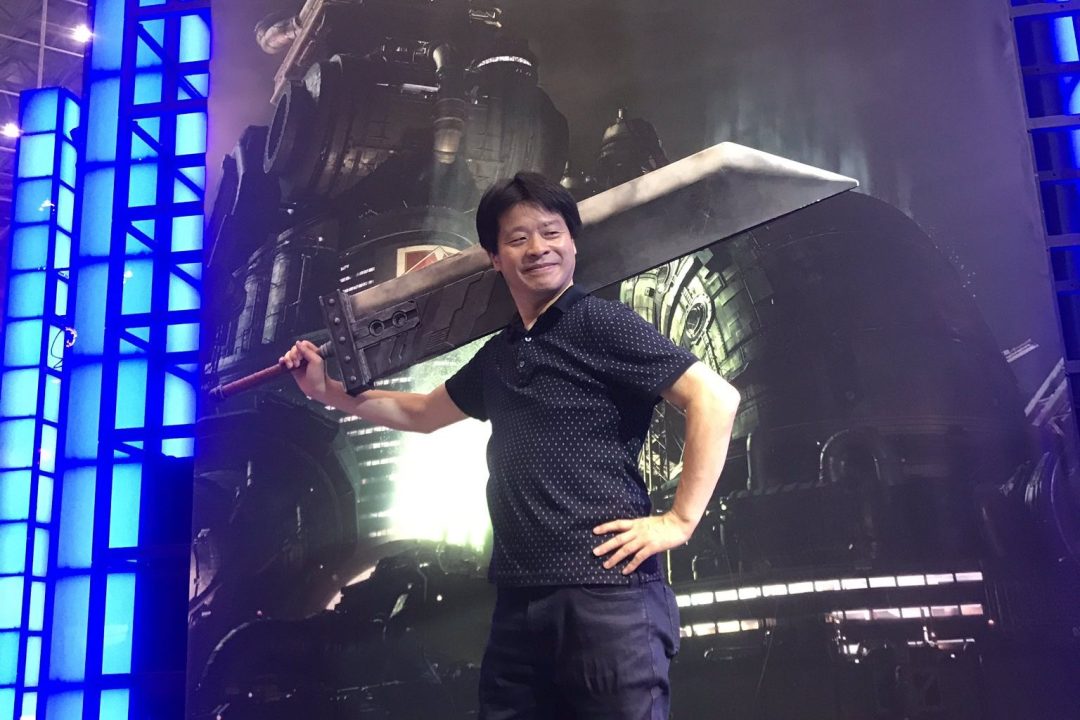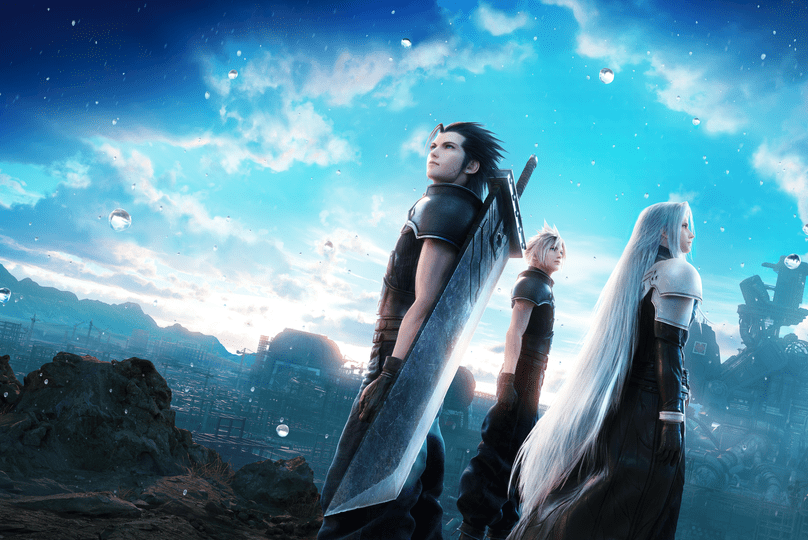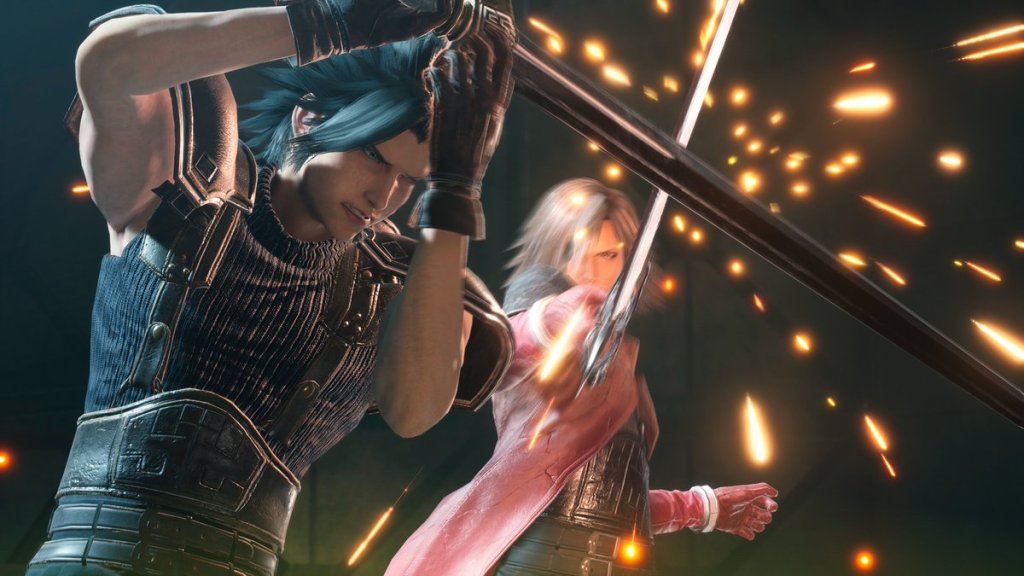Stuff Meets: Final Fantasy director Yoshinori Kitase
We talk 35 years of Final Fantasy with director Yoshinori Kitase

The 18th of December 1987 saw a then-new gaming title hit the shelves: Final Fantasy, a mythical role-player created by Hironobu Sakaguchi. It was a moderate success at the time, but was always destined for bigger things. The series has since gone on to sell over 173 million units worldwide, and become one of the most popular and beloved franchises in gaming.
The franchise now encompasses 16 core titles and many more spin-offs. It has grown into a merchandise empire. There are Final Fantasy TV shows and movies. Its iconic scores, largely composed by Nobuo Uematsu, are performed by orchestras and amateur musicians across the world. To toast the series’ 35th Anniversary we spoke with Yoshinori Kitase, director and producer at Square Enix.
Kitase started his career at Square Enix (then Squaresoft) in 1990, and has since either directed, produced or written for projects including Final Fantasy V, Final Fantasy VI, Final Fantasy VII, Final Fantasy VIII and Final Fantasy X. One of his greatest successes to date came in the iconic Final Fantasy VII. As the game’s director, he spearheaded development on a game that would prove era-defining for gamers of a certain age.
Here, Kitase looks back on the world he helped create.
I joined the Final Fantasy series after working on the Mana series. I was picked out by [Final Fantasy Director and Creator] Hironobu Sakaguchi to join the team from Final Fantasy V onward. Apparently, he liked an episode involving a Chocobo that I had put into the first mana game, known as Final Fantasy Adventure outside of Japan, so I was put in charge of the event scenes in Final Fantasy V.
From the first Final Fantasy game, we had intended to create a unique world with a jewel-like quality from the beginning and so asked [Final Fantasy artist] Yoshitaka Amano to do the concept art.
On the other hand, with the main creative team changing for each title in the series, each one has been able to include its own distinctive flavour. I think that the defining feature of Final Fantasy is how it maintains a consistent, ethereal feel to its worlds and stories revolving around tales of crystals, while also letting the creators freely use their imagination to put unique ideas into each game.
For Final Fantasy VII, as there were already a great many RPGs with traditional medieval European inspired fantasy settings out there, we were looking for an idea that felt completely different. So instead of rolling green fields and caves, we went for a grimy city of steel and steam, and instead of a dragon the enemy was a titanic corporation. Final Fantasy VII started with the intention of creating a Final Fantasy game with a setting completely different to what had gone before.
Traditionally, the Final Fantasy series had always discarded its former settings and characters with each episode, and started again from scratch. But with the advent of 3DCG [3D computer graphics], the depictions of those characters became much deeper and more fleshed out, and so we started to consider the possibility of sequels and spin-offs focussed on those characters.

Final Fantasy VII was the first Final Fantasy game to have those kinds of sequels and spin-offs, which was revolutionary for the series. Crisis Core was obviously one of the games that came out of that thinking. It went on to become the most popular of all the Final Fantasy VII series spin-offs, showing the struggles of the character Zack Fair, who was created for the original Final Fantasy VII.
Characters such as Cloud, Barratt, Tifa and Yuffie were all designed by [game artist] Nomura Tetsuya, who worked as a full character designer for the first time with Final Fantasy VII. When he creates characters, he doesn’t just focus on their appearance, but works out all aspects, such as their personal history, how they talk, what weapons they carry and even the voice actor who should play them.
I would have to ask him about the specific inspirations that led to each of these characters, but personally I like Vincent Valentine a lot. Vincent is quite rare in the Final Fantasy series as a horror themed character, and I proposed the original concept ideas for him so I have a special attachment.
“My greatest achievement is having established games as a media that can tell emotional and dramatic stories.”
There have been many advancements in terms of character creation. In the 2D era, and even in the early part of the 3D era, a creator would have to use CG tools to make everything about a character 100% digitally. I actually worked laboriously with the tools myself to create Cloud’s animations for Final Fantasy VII.
However, by the next game, Final Fantasy VIII, we had introduced motion capture using real actors. By Final Fantasy X, we had spoken dialogue with voice acting. Now we even have technology that lets us capture actor’s facial expressions and transpose them onto the faces of the characters in-game. I think that involving motion capture and voice actors in the creation process has definitely added more depth to how characters are portrayed, compared to what game creators who are not performance professionals can do.
My greatest achievement is having established games as a media that can tell emotional and dramatic stories. I am delighted that we were able to evolve into a form of media that depicts deep human drama at scale that can rival film. My favourite gaming moment from the Final Fantasy series? There are so many that I cannot really cut it down to just one, but I would like to pick quite a rare choice that is not mentioned a lot.

I really like the scene in Final Fantasy VI where Maduin and Madeline are sucked from the Esper World into the human world and the barrier is sealed behind them. That moment was actually inspired by the final scene in The Godfather.
It is difficult to say what I am most proud of, but ultimately I do have a strong attachment to Final Fantasy VII, with its many spin offs that are still being made.
The Final Fantasy series is about the most skilled creators making something using the best technology available at the time, so I believe it will continue to evolve in ways that nobody can imagine yet. I think the style we adopt is very fitting for the Final Fantasy series, where each game expands the worlds and is imagined freely, without preconceptions.